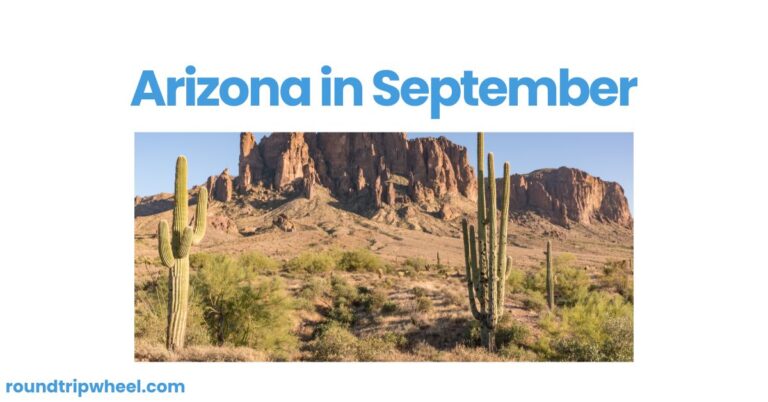The Best and Worst Times to Visit South Dakota

With its stunning natural beauty, rich history, and diverse attractions, South Dakota is a destination that draws visitors year-round. However, timing your trip can significantly impact your overall experience. From the peak summer months to the depths of winter, each season offers its unique advantages and challenges. In this comprehensive guide, we’ll explore the best and worst times to visit South Dakota, helping you plan the perfect getaway.
The Best Times to Visit South Dakota
Late Spring (May-Early June)
As the winter chill fades away, late spring emerges as an excellent time to explore South Dakota’s great outdoors. The temperatures are mild, with daytime highs averaging between 60°F and 70°F, making it ideal for hiking, biking, and outdoor adventures. This period also brings a burst of color as wildflowers bloom across the state’s prairies and forests.
One of the highlights of a late spring visit is the opportunity to witness the rebirth of nature in places like Custer State Park and the Black Hills National Forest. Baby animals, such as bison calves and deer fawns, can often be spotted, adding an extra dose of charm to your outdoor excursions.
Additionally, crowds tend to be smaller in late spring, allowing you to enjoy popular attractions like Mount Rushmore and the Badlands National Park with fewer fellow visitors. However, it’s worth noting that some establishments and seasonal businesses may still be closed or operating on reduced hours during this transition period.
September
As summer winds down, September emerges as a sweet spot for visiting South Dakota. The heat of July and August has subsided, but the weather remains pleasantly warm, with average highs in the 70s. This temperate climate makes it an excellent time for outdoor pursuits without the scorching sun.
One of the major draws of a September visit is the opportunity to witness the annual Buffalo Roundup at Custer State Park. This iconic event, typically held near the end of the month, is a true spectacle as park rangers herd the park’s massive bison herd into corrals for health checks and branding.
September also offers stunning fall foliage, particularly in areas like Spearfish Canyon and Sica Hollow State Park. The changing colors of the leaves create a vibrant natural canvas, making it a photographer’s dream and a scenic backdrop for hiking or driving tours.
With schools back in session and the peak summer crowds dispersed, September provides a more relaxed and uncrowded atmosphere for exploring South Dakota’s attractions, making it an ideal time for those seeking a peaceful and unhurried experience.
The Worst Times to Visit South Dakota
Late July to Mid-August
While summer is generally a popular time to visit South Dakota, the period from late July to mid-August can be challenging due to the annual Sturgis Motorcycle Rally. This massive event, held in the city of Sturgis, attracts hundreds of thousands of motorcycle enthusiasts from around the world, significantly impacting the entire Black Hills region.
During the rally, accommodations in and around the Black Hills become scarce and expensive, with many hotels and campgrounds booked well in advance. The influx of visitors also leads to increased traffic congestion, crowding at popular attractions, and a general festive atmosphere that may not appeal to all travelers.
If you’re not a motorcycle enthusiast or attending the rally, it’s generally advisable to avoid visiting the Black Hills during this period. The crowds, noise, and limited availability of accommodations can detract from the overall experience, especially for those seeking a more peaceful and serene getaway.
Winter (December-February)
While South Dakota’s winter landscape can be breathtakingly beautiful, the harsh weather conditions and limited accessibility to certain attractions make this season challenging for many visitors. Temperatures can plummet well below freezing, with average lows in January hovering around 10°F (-12°C) or lower.
Heavy snowfall and blizzards are common occurrences, potentially leading to road closures, power outages, and travel disruptions. Many scenic routes, such as the Needles Highway in the Black Hills, may be closed due to hazardous conditions, limiting access to certain areas.
Winter sports enthusiasts, however, may find this season appealing, as South Dakota offers opportunities for skiing, snowmobiling, and ice fishing. Popular destinations like Terry Peak Ski Area and the Black Hills National Forest’s extensive snowmobile trails cater to these winter activities.
If you do plan a winter visit, it’s essential to be prepared with proper cold-weather gear, warm clothing layers, and a flexible itinerary that accounts for potential weather-related disruptions. Additionally, driving in winter conditions can be treacherous, especially in the winding roads of the Black Hills, so exercise caution and consider renting a four-wheel-drive vehicle if necessary.
Shoulder Seasons: A Mixed Bag
The shoulder seasons of early spring (March-April) and late fall (October-November) can be unpredictable in South Dakota. While these periods can offer fewer crowds and lower accommodation rates, the weather can be highly variable, ranging from warm and pleasant to cold and snowy.
In early spring, lingering snowfall and freezing temperatures are still possible, especially in the western regions like the Black Hills. However, as the season progresses, the conditions can quickly transition to mild and sunny days, perfect for outdoor activities.
Late fall, on the other hand, can bring a mix of crisp, colorful days and sudden bouts of winter weather. While the fall foliage can be stunning, low temperatures and early snowstorms may limit access to certain attractions or hiking trails.
If you plan to visit during these shoulder seasons, it’s essential to pack for a range of weather conditions and be prepared for potential closures or disruptions. Additionally, it’s advisable to check the operational status of attractions and accommodations before your trip, as some may have reduced hours or be closed for the off-season.
No matter when you choose to visit South Dakota, the state’s diverse landscapes, rich cultural heritage, and array of activities offer something for every traveler. By understanding the best and worst times to visit, you can plan your trip accordingly and make the most of your South Dakota experience.

About Author
Hey there, fellow explorers! I’m Mark Rodriguez, a big fan of adventures and always hungry for more. Packed with stories and a trusty camera, I’m on a mission to explore cool places around the world.
I love diving into new cultures and landscapes. As a travel writer, my goal is to get you excited about stepping out of your comfort zone, trying new things, and discovering the awesome magic our world has.
Check out my blog for cool stories, travel ideas, and helpful tips to plan your own amazing getaway!





